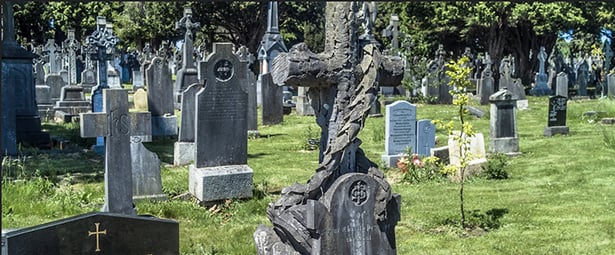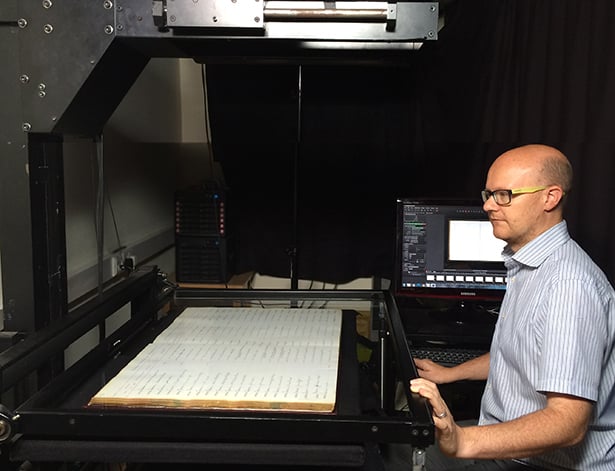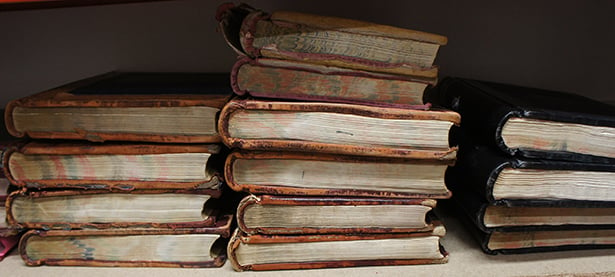There are a number of reasons to digitise your burial records, from vastly speeding up satisfying enquiries by making them searchable, to simply preserving the records’ precious information in digital form in case the worst should happen.
As a Cemetery or Bereavement Services Manager you may be well aware of the benefits of digitisation and might even be considering digitising your records. But if you have not managed a digitisation project before, it’s likely you are unsure of what’s involved and/or concerned about the potential challenges it may present.
At TownsWeb Archiving we’ve partnered with hundreds of cemeteries and crematoria across the UK to digitise their fragile burial register and cremation register collections. Naturally we have developed a wealth of experience in successfully implementing bereavement record digitisation projects during this time.
So to help you, we have put together our essential guide to planning to digitise burial records…
Top Tips for Planning to Digitise your Burial Records
1. Begin by asking why you’re digitising
Obvious perhaps, but it’s absolutely crucial to clearly define the purpose of digitising your burial records from the beginning of the planning process.
Do you simply want to create a high resolution digital back up of the physical registers for preservation and disaster recovery?
Do you want to save time looking up the physical registers and improve access to the records for cemetery staff by having a searchable digital version?
Or perhaps you want to make the digitised burial records available to the public as an online resource?
Specifying the goal of the digitisation project early on will help to inform many of the other decisions later on in the planning process.
2. Consider who you are digitising the burial records for
Specify who the target users of your digitised records will be, whether they be cemetery/crematorium staff, academic researchers, or members of the public.
Identifying who your target users will be allows you to anticipate how they will use your digital archive and what information they will need. This can then help inform your planning of how to offer access, what information to capture, and even which particular records to digitise (if budget doesn’t allow for digitising your entire archive).
For example, if staff at the cemetery/crematorium will be the main users, providing appropriate access may be as simple as importing the digitised records and metadata (related information) into your existing cemetery administration system.
However, if your aim is to allow members of the public to search the digital records for their deceased relatives, you might provide access via a PC/Tablet on-site or a public website online.
3. Assess the physical records you plan to digitise
It’s important to assess the condition of the volumes you intend to digitise during the planning stage of the project, in order to ascertain whether they are in a suitable state to go through the digitisation process without being harmed.
In most cases, if the registers you are planning to digitise are being regularly handled, they are likely to be suitable (as long as the technicians carrying out the scanning adhere to fragile handling procedures). However, in some cases conservation processes might need to be undertaken to protect or repair volumes prior to digitising.
4. Plan what additional information you need to capture
Digital images of your records alone are not very easily accessible or manageable. It is the information (or metadata) stored with them that makes the files useful and their data accessible. Part of the planning process is deciding which metadata needs to be captured to fulfil the goals of the project…
Capturing basic information about which register/volume each digital image came from, is essential for effectively organising your digital files during and after the digitisation process.
As standard, most digitisation suppliers will include some identifying information within the filename of each digital image. Normally this will include: the cemetery/crematorium name (if the collection includes volumes from multiple locations), the type of register, the title of the volume the image originates from, and a sequential scan identification number.
For example a filename might be: TownsWebCem_Burial Register_Jan1931_025.tif
If you are digitising purely for preservation, this filename metadata may be enough.
However, if you plan to make the digitised records keyword searchable, either for your staff on local computers or for the public as an online resource, extra information will need to be transcribed from the digital images as text. Information commonly transcribed for burial record digitisation projects includes the first name, surname, gender, and date of death (year) for each record.
Once transcribed into an Excel spreadsheet, this data can be imported into collections management software to allow searching against any of those information fields to retrieve particular records.
5. Choose the right digitisation partner
Choosing a digitisation provider to partner with is THE most important decision when planning your project, and of course you should give careful consideration to this.
To help ensure you select a suitable provider, you should look for a digitisation specialist that:
- Is experienced in working with cemeteries & crematoria
- Is experienced in the careful handling of fragile archival materials
- Can provide sample scan images from other burial record digitisation projects
- Makes an effort to understand your project aims and needs
- Can provide a clear and transparent cost quote for the project
For additional advice on choosing a digitisation provider, The Collections Trust also offers this guidance.
One final point to bear in mind when choosing a partner is to always consider your goals, beyond just the digitisation itself.
For example, imagine two providers have similar digitisation credentials, but one also sells a software platform for managing your digital burial records. If you know you will require a system to manage your digitised files in the future, choosing that provider for both services may deliver considerable time and cost efficiencies. 
6. Decide whether to digitise on- or off-site
Most professional digitisation suppliers will offer both on-site (where the supplier travels to your cemetery/crematorium to perform the digitisation) and off-site (where your volumes are transported to the suppliers studios) services. Which service is best for your project will be dependent on the budget you have available and how frequently you need access to the registers being digitised.
If the burial/cremation records that you plan to digitise are in frequent use, for example being regularly referenced to answer enquiries from the public, on-site digitisation may be the best option as this avoids the registers being inaccessible for long periods.
However, on-site digitisation is often slightly more expensive and may be unsuitable for larger volumes (greater than A2+ size when opened), which require large format scanning equipment that can’t be easily transported.
If frequent access to the materials being digitised is not an issue, then off-site scanning will likely be the most cost and time effective option. It is worth noting though that TownsWeb Archiving offers a free “look-up” service as standard when digitising burial records off-site.
7. Protect your copyright
When discussing the scanning project with potential digitisation suppliers, make sure to confirm that you will retain the copyright for all of the digital images produced from your registers. This will ensure that you are completely free to do as you wish with the digital collections.
Some digitisation suppliers will offer to perform the digitisation for what appears to be a very competitive price, however this competitive price is only offered because it is stipulated in the contract that they will retain rights to publish (and potentially charge for access to) your digital collections online.
8. Plan how you will manage your digital archive
To get the most from your digitised records you will need archive management software that allows you to store and maintain them, as well as efficiently search for and retrieve particular records.
Ideally, you will need archive management software that:
- Can store all of the digital images and associated metadata
- Allows browsing by particular metadata fields (such as year of burial)
- Allows keyword searching against multiple metadata to access your records (such as first name, family name, and year of burial)
TownsWeb Archiving’s own Book Viewing Software is one example of a system that offers these features. Alternatively, if your cemetery/crematorium already has an administration system in place, you may simply be able to import the digital images and metadata into that system, assuming the it supports that feature.
If your goal is to publish the digital records online, you will need a more advanced system that features content management functionality and that is able to interface with a public website. TownsWeb Archiving’s Chronicle system is one example of this.
Want more digitisation planning advice?
We hope you found the post above helpful. If you are considering digitising your burial records and have questions that aren’t answered here, please feel free to contact us by phone on 01536 713834 or email and one of our bereavement sector digitisation consultants will be happy to have a chat.
You might also like our Three Reasons 2014 is the year to digitise your Burial Records post.






 USE OUR ONLINE
USE OUR ONLINE








